Gardening FAQ #17 – What You Need To Know
In this article, we share how to handle low light growth, removing broad mites, star apple and much more. Let’s go through the common gardening FAQ, problems and solutions you need when growing your plants either indoor and outdoor.
Bathroom too dim for spider plant to grow well – a common question in gardening FAQ
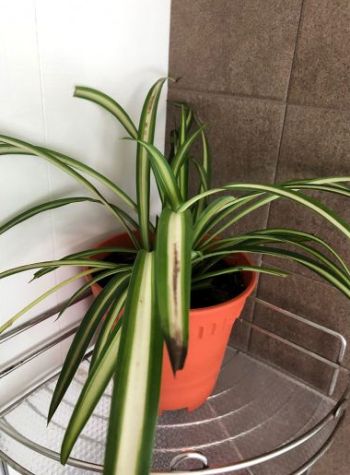 I bought this plant recently and placed it in my bathroom. I saw on a television programme that this plant is said to help absorb odours. But the leaves are turning black. What is wrong?
I bought this plant recently and placed it in my bathroom. I saw on a television programme that this plant is said to help absorb odours. But the leaves are turning black. What is wrong?
The plant is commonly called the spider plant (Chlorophytum comosum). It is a common houseplant that is often advertised to have “air-cleansing” properties, but its efficacy remains doubtful.
The leaves appear to be affected by disease and are sparse and droopy. This may be caused by the lack of sufficient sunlight that is needed for the plant to have healthy growth. The light conditions in the bathroom are often too dim to support plant growth and the lack of light will make a plant susceptible to disease.
The spider plant prefers to be grown under filtered sunlight for at least four hours daily. You may want to move it to a brighter place for it to photosynthesise for several days a week before returning it to the bathroom for display purposes.
One of the way to control the sunlight is to use growing lights. You can read up my post on growing lights fixture where I show you the top 4 things you need to know.
Star apple produces edible fruit and has attractive foliage
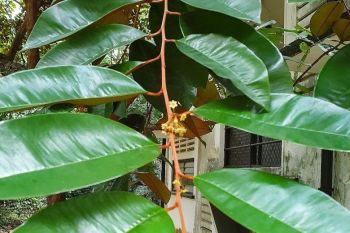 I saw this large tree with fruit near my place. What tree is this and is the fruit edible?
I saw this large tree with fruit near my place. What tree is this and is the fruit edible?
The tree is botanically known as Chrysophyllum cainito. Its common names include star apple, golden leaf tree and milk fruit. It is admired for its attractive leaves with golden-brown undersides.
When cut, the fruit has a radiating star pattern in its cross-section. The fruit, when fully ripe, is eaten as a fresh dessert fruit. It is reported to be sweet and best served chilled.
Ulam raja may be infested with broad mites
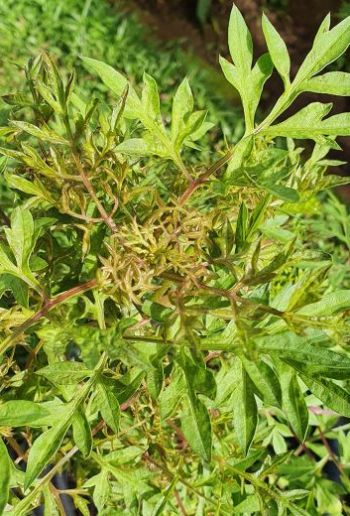 I grow ulam raja in a pot. I harvested some leaves recently, pruning the top of the plant. But now, the new leaves look crinkled at the top as well as at the bottom of the stem. What is the right way to prune the plant and how regularly can I harvest the leaves?
I grow ulam raja in a pot. I harvested some leaves recently, pruning the top of the plant. But now, the new leaves look crinkled at the top as well as at the bottom of the stem. What is the right way to prune the plant and how regularly can I harvest the leaves?
Your plant does not appear to be suffering from nutrient deficiency. Instead, it may be infested with broad mites which feed on new leaves and cause them to become deformed.
Do the affected leaves feel stiff and are easily broken apart? The undersides may also appear shiny compared with normal leaves.
Broad mites are commonly found on chilli plants and if you have infested chilli plants nearby, the pests may have been brought over by flying pests such as whiteflies.
Broad mites are microscopic and are not visible to the naked eye.
They can be controlled with neem oil, summer oil or a matrine-based organic pesticide. Repeated applications that cover all parts of the plant, especially the new emerging foliage, are needed to keep the pest infestation under control.
Prune the young leaves regularly. As the plant is an annual, it will die after flowering and seeding for reproduction purposes. By pruning the young shoots regularly, you will help prolong the plant’s life.
For suggestions on how to control another plant worst enemy, head over to our section on Weed & Moss Control.
Indian rue needs a well-drained medium to thrive
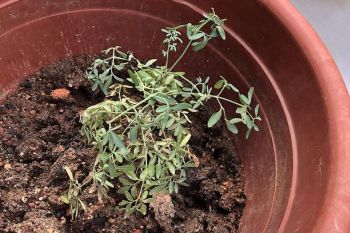 This herb gives green bean soup a fragrant and unique flavour. But it is not growing well. What should I do?
This herb gives green bean soup a fragrant and unique flavour. But it is not growing well. What should I do?
The plant is commonly known as the Indian rue. Its botanical name is Ruta graveolens and it is grown both as a culinary and medicinal herb.
This plant can be a little challenging to grow in hot and humid environment. It prefers a drier climate to thrive. You need to grow it in a porous, well-drained medium as constant wet feet can cause it to rot and die. The roots may need to dry out a little before you water it again.
The plant needs a sunny spot with either direct or filtered sunlight for at least four hours daily.
If you want to grow this indoors under a controlled environment, read our post on Guide to Growing Tents.
Or if you want to grow this under controlled lighting, consider using growing lights. You can read up my post on growing lights fixture where I show you the top 4 things you need to know.
Crucifix orchid grows best in a sunny location and in a porous growing medium
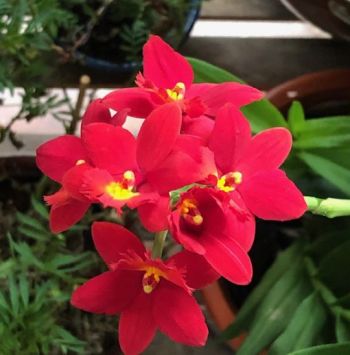 What is the name of this orchid growing in my balcony?
What is the name of this orchid growing in my balcony?
This plant belongs to the genus Epidendrum and is commonly called the crucifix orchid. It is considered an easy-to-grow orchid.
It prefers a sunny location and needs a well-drained and porous medium. Locally, it is usually potted up in charcoal chips which permit fast water drainage and provide ample aeration for the roots.
If you want to grow this indoors under a controlled environment, read our post on Guide to Growing Tents.
Or if you want to grow this under controlled lighting, consider using growing lights. You can read up my post on growing lights fixture where I show you the top 4 things you need to know.